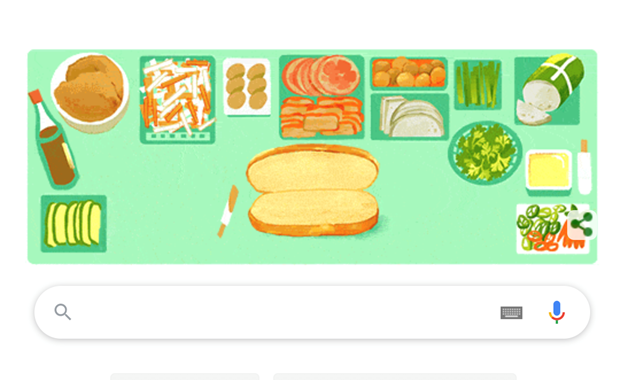
An animated image of Vietnam’s “banh mi” (bread) is featured on Google’s homepage (Photo: VNA)
Google’s move has contributed to promoting Vietnam's special snack to the world.
The name banh mi /ˈbɑːn miː/ is one of three Vietnamese words in the Oxford English dictionary, together with pho /fə ː/ and ao dai /ˈaʊ ˌdʌɪ/, proving its fame and popularity.
The first baguette in Vietnam dates back 130 years to the time when France colonized the country between the 1880s and 1954. The French usually cut it into small sections to serve with soup, curry or butter.
In 1970, wood-fired ovens were converted into larger brick kilns to bake in bulk, which gave the bread its Vietnamese identity.
From then on Vietnamese chefs began making variations. Instead of putting butter or jam on bread, they layered it with bacon, making it delicious and more convenient.
Banh mi has been developed across Vietnam. The flavors of the modern banh mi vary by region in Vietnam. In Hanoi in the north, the fillings are more simple than the “original” found in Ho Chi Minh City in the south and include high-quality cold cuts. In the central coastal city of Hoi An, the meat used is served warm.
Vietnamese banh mi is present in countries where Vietnamese people live because it is easy to make and source ingredients.
It was ranked second in a story run by the Guardian about the World's Best Street Foods.
David Farley, a BBC writer specializing in travel and cuisine, praised banh mi as "the best sandwich in the world".
Meanwhile, late chef Anthony Bourdain, one of the most influential culinary experts in the world, complimented banh mi in his “No Reservation” program on CNN. /.
VNA
 Vietnam wins triple runner-up titles at world bodybuilding championships
Vietnam wins triple runner-up titles at world bodybuilding championships



